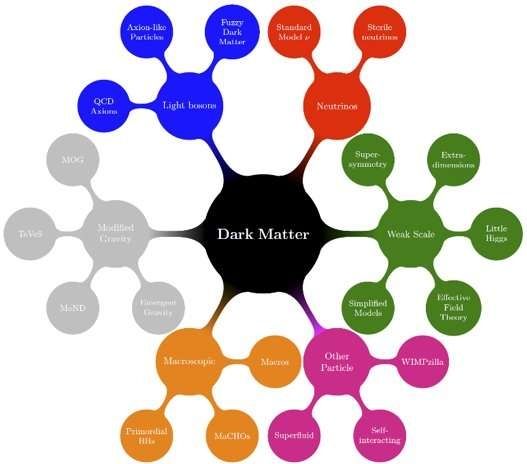Page 9711
Oct 5, 2018
Intel plots a weird, spooky future in quantum computing
Posted by Genevieve Klien in categories: computing, particle physics, quantum physics, space
There, engineers are doing something strange. They’re freezing computer chips to 460 degrees Fahrenheit below zero, colder than deep space, to simulate the quantum structure of the universe.
At such extreme temperatures these remarkable chips, called qubits, enable scientists to peer into the complex, uncertain interaction of particles at the atomic level — an unseen world in which seemingly contradictory results can exist simultaneously, a place where simply observing an interaction can change it. Or wreck it altogether.
“Quantum — it’s something weird,” said Mike Mayberry, Intel’s chief technology officer and general manager of Intel Labs.
Continue reading “Intel plots a weird, spooky future in quantum computing” »
Oct 5, 2018
A new era in the quest for dark matter
Posted by Genevieve Klien in categories: cosmology, particle physics
Since the 1970s, astronomers and physicists have been gathering evidence for the presence in the universe of dark matter: a mysterious substance that manifests itself through its gravitational pull. However, despite much effort, none of the new particles proposed to explain dark matter have been discovered. In a review that was published in Nature this week, physicists Gianfranco Bertone (UvA) and Tim Tait (UvA and UC Irvine) argue that the time has come to broaden and diversify the experimental effort, and to incorporate astronomical surveys and gravitational wave observations in the quest for the nature of dark matter.
Over the past three decades, the search for dark matter has focused mostly on a class of particle candidates known as weakly interacting massive particles (or WIMPs). WIMPs appeared for a long time as a perfect dark matter candidate as they would be produced in the right amount in the early universe to explain dark matter, while at the same time they might alleviate some of the most fundamental problems in the physics of elementary particles, such as the large discrepancy between the energy scale of weak interactions and that of gravitational interactions.
Oct 5, 2018
These Photos of Asteroid Ryugu from the Successful MASCOT Landing Are Amazing
Posted by Genevieve Klien in category: space
Before the MASCOT lander spent 17 hours studying the asteroid Ryugu, the spacecraft captured some incredible photographs.
Oct 5, 2018
NASA says Voyager 2 may be nearing interstellar space
Posted by Genevieve Klien in category: space
Voyager 1 could soon welcome its twin to the space outside our solar system.
- by
-
Amanda Kooser
Oct 5, 2018
This Agile Robot Assists with Various Construction Tasks
Posted by Gerard Bain in categories: engineering, robotics/AI

https://www.youtube.com/watch?v=x7Xqu3Hw4fk
AIST recently unveiled its HRP-5, the fifth iteration of a humanoid robot design at the International Conference on Intelligent Robots. The long-term vision for the robot is to assist, not replace, workers with certain repetitive tasks. HRP-4 weighed 39kg and stood 151 cm tall with a 0.5kg maximum payload (per hand), so most likely the newest version will at the least boast an increased payload and sensor technology.
Facebook: fb.com/interestingengineering
Twitter: twitter.com/intengineering
Instagram: instagram.com/interestingengineering
Linkedin: linkedin.com/company/10070590
Continue reading “This Agile Robot Assists with Various Construction Tasks” »
Oct 5, 2018
Brown bear saliva kills a bacteria that current antibiotics are unable to treat
Posted by Nicholi Avery in category: biotech/medical

As NASA celebrates its 60th anniversary, see how the historic institution is taking us to the moon, to the surface of Mars, to the outer edge of our solar system and beyond. 🔭
Watch above and beyond: nasa’s journey to tomorrow saturday oct 13 at 9p on discovery and discovery GO.















